- Home
- Jonathan Maberry
Scary Out There
Scary Out There Read online
CONTENTS
Acknowledgments
Introduction by Jonathan Maberry
Brenna Yovanoff “The Doomsday Glass”
Carrie Ryan “What Happens to Girls Who Disappear”
Cherie Priest “The Mermaid Aquarium: Weeki Wachee Springs, 1951”
Ellen Hopkins “As Good as Your Word” (Poems)
Rachel Tafoya “The Invisible Girl”
Zac Brewer “Death and Twinkies”
Linda Addison “Secret Things” (Poems)
Josh Malerman “Danny”
Madeleine Roux “Make It Right”
Lucy A. Snyder “Shadowtown Blues” (Poems)
Nancy Holder “Beyond the Sea”
Tim Waggoner “The Whisper-Whisper Men”
Neal & Brendan Shusterman “Non-player Character”
Marge Simon “Falling into Darkness” (Poems)
Christopher Golden “What Happens When the Heart Just Stops”
Kendare Blake “Chlorine-Damaged Hair, and Other Pool Hazards”
R. L. Stine “The Old Radio”
Jade Shames “Rites of Passage” (Poems)
Rachel Caine “Corazón Oscuro”
Steve Rasnic Tem “The Boyfriend”
Ilsa J. Bick “Bearwalker”
About Jonathan Maberry
To the memory of Rocky Wood (1959–2014)—former president of the Horror Writers Association, Bram Stoker Award–winning author, and a great friend.
We love you and miss you.
And we wonder what strange adventures you’re having now!
And, as always, to Sara Jo.
ACKNOWLEDGMENTS
This project would not have been possible without the help of the Horror Writers Association (www.horror.org) and its members: President Lisa Morton, Leslie S. Klinger, Kate Jonez, and Catherine Scully.
Thanks to our agent, Sara Crowe of Harvey Klinger, Inc.; and thanks to David Gale, Liz Kossnar, Laurent Linn, and all of the folks at Simon & Schuster Books for Young Readers. And a particular thanks to the teachers and librarians out there who have been tireless in their efforts to open the hearts and minds of young readers by exposing them to books.
* * *
It’s Scary Out There: An Introduction
JONATHAN MABERRY
* * *
What scares you?
I bet it’s not the same thing that scares me. Or the thing that scares your best friend. Or anyone else you know. Even if it’s similar, it won’t be the same thing. It can’t be. Fear is too personal. Our fears are our own. We know our fears and they certainly know us.
When I was little, I remember being afraid of the darkness at the top of the stairs.
Truly afraid. Terrified.
There was something in it—I was sure of that. Something with claws. Something that crouched out of sight and panted like a dog. Something hungry. I knew that unless I came up the stairs with my back pressed against the far wall, that a hairy arm would reach out between the slats in the second floor rail and slash me. I knew it. Absolutely knew it.
That was when I was eight.
I’m not sure when I stopped believing that there was a werewolf on the second floor landing. Maybe it was around the time my best friend got sick with leukemia and wasted away over the course of a long, bad summer. Or, maybe it was when my father started hitting us kids. Or, maybe it was when the gang of kids in the park threw rocks at a group of African American girls who’d come to the local skating rink, killing one of them and sparking a race riot.
Maybe it was any one of a dozen other things. We lived in an old row home in a low income neighborhood in Philadelphia. It was a very rough place to grow up. Poverty, violence, crime, racism, hatred. There seemed to be a lot of darkness, even on sunny days. Or . . . maybe I just noticed the shadows when the sun was shining. The contrast between dark and light was easier to spot.
Or, maybe what happened was that the things that scared me changed entirely. I stopped being afraid of werewolves and zombies when I realized how absolutely terrifying it was to just say “Hi” to a girl. Or, when I walked into a new school, and I was absolutely convinced that I was too weird, too poorly dressed, too geeky, too bookish, too whatever to make friends with any of the kids I saw. They all looked happy. They all seemed to know one another. I was sure they each had terrific families, got great grades, could afford nicer clothes, never doubted themselves, were loved, were funny, were cool, belonged. . . .
My fear changed, but my capacity for being afraid did not. Fear, I realized, it changed, it evolved like some kind of twisted chameleon. It raced ahead of us to make sure that we never completely outgrew it. Fear peered into our thoughts and made adjustments, picked new weapons, mapped out fresh strategies so that it could set traps along our path.
I’m older now, and tougher. When I was a kid and afraid of even walking down my own block, I began studying martial arts; now I’m an eighth-degree black belt. Very tough. You’d think that would make me crush my fear and toss it over my shoulder.
Yeah, that would be great.
Fear is too sly for that. Too slippery and smart. Now that I’m older, I have a whole new set of fears. Tough as I am, there’s no way for me to be there to protect everyone I love all the time. And there are new monsters: wars, political unrest that seems to be tearing the country apart, intolerance directed at those I love, new diseases. . . .
Well, you get the idea. Fear is always there. And it is so personal a thing. Some of the things that scare me don’t make my best friend twitch. He’s not afraid of those things. But I know for sure there are things in his life that scare him green. Things that don’t make me twitch.
Maybe that’s why I read horror stories. I want to understand my own fears, and I want to understand what’s happening in the heads and hearts of my friends. I mean . . . how can you be there for your friends if you can’t sympathize or empathize?
When I was a kid, I devoured every horror story I could get my hands on. The darker, the better. Why? Because it helped to know that I wasn’t the only one who was afraid of the dark. And it helped even more to know that I wasn’t the only one who was afraid of the darkness inside my own head and heart. I read it all, in print and in comics. Horror poetry, too, because sometimes a poet can stab right to the heart of the darkness.
That’s when I began writing horror stories too. To defeat monsters? Sure, that was part of it. Not all, though. I wrote horror stories so I could understand the shadows in my head. Sounds crazy, but it’s not.
I bet you understand that. You’re reading this book. It doesn’t matter if you want to write horror. What matters is that you’re willing to read it. Something about this book touched a nerve. Maybe it was the title, maybe the cover, maybe the text on the flap. Maybe it’s one or more of the contributors.
Or maybe it’s that you want to understand darkness too. The darkness around you in your life, and the shadows inside.
That’s probably it. To one degree or another.
You’re like me. You’re like the amazing lineup of contributors in this book. Some of them you’ll already know (who hasn’t read a Goosebumps book?), while others will be new to you. And I’ve included poets along with the writers of prose stories.
Scary Out There is a project of love—admittedly of the dark kind—I edited for the Horror Writers Association. The HWA is the home of horror writing in long and short fiction, poetry, drama, and nonfiction. They recognize the very best in horror writing with their annual Bram Stoker Award, named for the author of Dracula. The contributors whose strange imaginings you’ll find here are all members of that august body, and the variety you’ll discover in these works suggests how long and how subtle the reach of horror can be. Like many works that we in the HWA
consider horror, this is not a book dedicated to supernatural horrors. Sure, there are monsters here, but fear comes in all shapes and sizes, all frequencies and flavors. Being alone, being ignored, not fitting in, peer pressure . . . man, there are so many kinds of fear out there.
So . . . yeah . . . it’s scary out there.
It’s scary in here, too.
Take a deep breath and turn the page. . . .
Jonathan Maberry is a New York Times bestselling novelist, five-time Bram Stoker Award winner, and comic book writer. He writes the Joe Ledger thrillers, the Rot & Ruin series, the Nightsiders series, and the Dead of Night series, as well as stand-alone novels in multiple genres. His comic book works include, among others, Captain America, Bad Blood, Rot & Ruin, V-Wars, and others. He is the editor of many anthologies, including The X-Files, Out of Tune, and V-Wars. His book V-Wars is in development for TV, and Extinction Machine and Rot & Ruin are in development for film. V-Wars was also released as a tabletop board game. He is the founder of the Writers Coffeehouse and the cofounder of The Liars Club. Prior to becoming a full-time novelist, Jonathan spent twenty-five years as a magazine feature writer, martial arts instructor, and playwright. He was a featured expert on the History channel programs Zombies: A Living History and True Monsters. Jonathan lives in Del Mar, California, with his wife, Sara Jo.
Website: jonathanmaberry.com
Twitter: @JonathanMaberry
Facebook: facebook.com/jonathanmaberry
* * *
The Doomsday Glass
BRENNA YOVANOFF
* * *
There were rats in the subway.
Or maybe not rats, but small, scurrying things that moved like rats. They had a dark, mangy texture that made it hard to tell if they were supposed to be mammals or reptiles. You couldn’t kill them, because they weren’t really enemies, but Nim liked to watch them anyway. She promised herself a closer look the next time she came through.
Currently though, she was on a mission, standing on a pile of scrap metal and broken tile under a dim, flickering light. The painted ceiling was crumbling now, but in a former life—some glorious, fictitious past—it must have been spectacular.
As game levels went, Subway Run was ridiculously straightforward, but the layout was designed to lure you into a false sense of security. There were hardly any health packs or checkpoints, and there were lots of places for things to hide.
Around her the tunnel buzzed with activity as other players passed through on their own private missions.
Nim noticed the boy at about the same time the first skin thief came slinking out from under a subway car, but only because she had a tendency to notice things. He was standing on the other side of the subway tracks, near one of the service alcoves. Staring at her. She did not like how he stared at her.
Her awareness of him was just an observation, though. The thief was closer.
It crept along the oily ground—ugly and hairless, with veins that crawled over its body like lines on a road map. She paged through her weapons and picked out a knife. The tiny one, which was hard to use and had an incredibly short range, but took up almost no space in her inventory.
Predictably, the thief plunged at her, all ooky and rotten, with its back hunched and its barbed tongue hanging out. As it clattered over the rubble, its claws made a sound like breaking plates.
Nim stood with her arms at her sides, waiting for it to complete its charge. As it reached her, she cut the barbed tongue out of its mouth and spun in a wobbly half circle, teetering on the launchpad.
She’d never been the most coordinated when it came to sports, but in Vertigo, it didn’t matter if she wobbled on her actual feet—the game had gyroscopic stabilizers. Her headset was calibrated to the exact center of the launchpad though, and when she listed, the goggles glitched a little, creating a weird doubling effect—a blurry overlay that emphasized the line between the fake, virtual world and her own messy bedroom.
She caught her balance and the world righted itself. The severed tongue completed its arc and landed on the ground at her feet with a sloppy, squelching noise.
“Nim,” said her best friend, Margaret, who was farther along the tunnel, slicing through a pack of limbo demons in easy strokes. “I know you know this, but that knife is ridiculous.”
In the world of Vertigo, Margaret was nearly seven feet tall and mostly muscle and carried a machete made of fire and colloidal sulfur. It was surreal to watch this scarred giant brutalize her way through the game while Margaret-Margaret, real Margaret, was down in her basement wearing a USC T-shirt and a pair of boys’ boxer shorts, listening to the Pixies with her headset on and her contacts out. She’d picked the biggest, baddest woman the character shop offered, but Nim suspected Margaret would have been just as happy as a man or a monster. Anyone but a short, grouchy Chinese girl with double-jointed fingers and a messy bob that was starting to grow out. People didn’t bother you much when you were seven feet tall.
During the day they were . . . nobody, resigned to beigeness and boredom and tenth grade at Slope Hill, but when they logged on to Vertigo, they were magical. Exceptional.
There was something so gratifying about spending every day in ordinary-world, where people teased you or ignored you or called you fire-crotch (Nim) or flat (Margaret)—where they talked over you every time you answered in class, going out of their way to make sure you knew exactly how little you mattered. There was something about sitting through all that and then leaving it, happily, voluntarily, for the scariest place on the network.
In Vertigo, it didn’t matter who you were. While Margaret smashed her way through the darkest corners, challenging herself to gruesome, manic speed runs, Nim survived by being clever. She was patient and tidy—deviser of traps and torture devices and massive explosions that could take out fourteen enemies at once. Her favorite weapon was the game itself.
There were a lot of rules and limitations, of course—a physics engine that tended to overcorrect every little gesture, and a pretty nonsensical magic system—but there were ways of exploiting them.
“You want the rest of these limbos over here, or should I?” said Margaret, her voice buzzing brightly in Nim’s ear. “You can have them. I just maxed out my bank.”
Nim stomped hard on the skin thief, then flicked the blood off her tiny knife and shook her head. Today, she was on a mission to figure out what to do with the dogs.
Vertigo had a roster of eighty-seven basic monsters. Most were sort of humanoid, with hypnotic lantern eyes or poison claws and only one or two basic attacks. The dogs were interesting. They were a problem, because no matter what, they could always hear you.
There were repellent sprays you could buy in the shop and a special bait you could make if you’d collected enough ugly, goopy mushrooms from a certain maintenance room down in the sewers that was really hard to find, but mostly you just snuck past them and tried not to make any noise.
Now Nim was on the hunt, cruising the derelict subway with a tiny knife and nothing else. The shadows felt warm and thick around her, almost like a solid thing. This was the magic of the headset—as soon as you put it on, every surface and texture was like life, only better. The world exploded into vivid clarity, and when a skin thief ran into the point of your knife and bled all over, it looked slick. Every sound and movement was amplified, translated through the headset with nightmare clarity.
Nim whistled softly, a long, low trill, and called under her breath, “Heeeere, puppy-puppy-puppy . . .”
The boy was standing in the open now, gazing at her across the tracks. Nim realized he was wearing a mask, but it was stupidly plain. The mask of a blank face. Of no one.
Even his outfit was nondescript—chinos and a polo shirt. He had no weapons that Nim could see. She wondered if maybe he had some kind of bonus that made him unattractive to basic enemies. It certainly wasn’t impossible.
Vertigo was a strange and generous place. As long as you paid attention, there was treasure everywhere. A
few months ago Nim had found a message on the wall of an abandoned house that you could see only when the moon was up. She’d followed the clues to a cove on Dreadnought Island and was rewarded with a spell that made you disappear completely as long as you stood in a shadow.
She had a hat that stopped time, but only in a certain room in the basement of Noble Hospital, and a talisman that worked a little differently on every kind of demon.
She’d puzzled over riddles, investigated every mysterious door—performed every tedious, cumulative task the game presented her with.
Her newest acquisition was something called a Doomsday Glass. It didn’t look like much—a silver disc that fit in the palm of your hand—but when you stuck it to the wall, it spread to the size of a doormat and hypnotized anything that came bopping along.
It struck Nim as severely limited. She didn’t want to make monsters stare at themselves. It seemed too simple, and Nim’s gaze narrowed to razor sharpness whenever Vertigo seemed simple. Now she was on a personal mission to find the place where the simple got complicated.
She’d positioned the glass on the ground between the subway tracks, and now it glittered faintly in the cool light while she prowled the tunnel for the dogs.
As she moved through the rubble—which actually meant doing a kind of little dance, scuffing the launchpad with her feet—she was pretty sure that one had spotted her. She could hear the tap-tap of its claws, see the tendrils of smoke that drifted from between its teeth.
The problem of the dogs had a lot of variables. They were demonically fast when they wanted to be and could burn through most kinds of armor. She’d nearly died twice and wasted a lot of health packs before realizing something important. A dog could make a mess of you in about three seconds, but they never attacked until you looked at them straight-on.
This one was keeping pace. From the corner of her eye, she could see the glow of the coals burning way down in its throat. Picturing it made her think of fairy tales. She was a princess, small and innocent and attended by monsters.

 Flesh & Bone
Flesh & Bone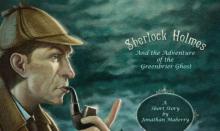 The Adventure of the Greenbriar Ghost
The Adventure of the Greenbriar Ghost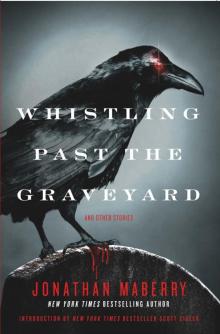 Whistling Past the Graveyard
Whistling Past the Graveyard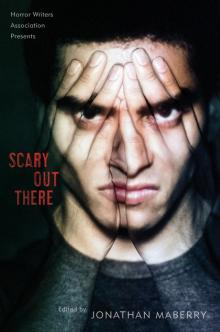 Scary Out There
Scary Out There The Wolfman
The Wolfman The King of Plagues
The King of Plagues Doctor Nine
Doctor Nine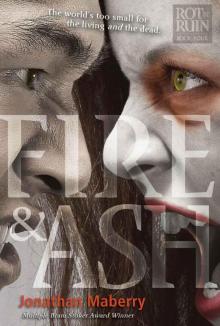 Fire & Ash
Fire & Ash The Dragon Factory
The Dragon Factory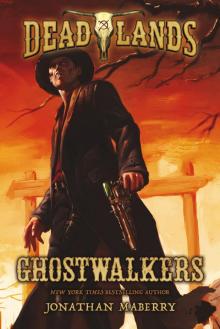 Deadlands: Ghostwalkers
Deadlands: Ghostwalkers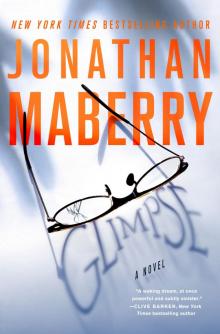 Glimpse
Glimpse Mars One
Mars One Benny Imura 03.5: Tooth & Nail
Benny Imura 03.5: Tooth & Nail Bits & Pieces
Bits & Pieces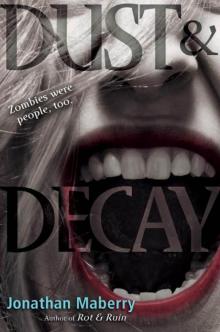 Dust & Decay
Dust & Decay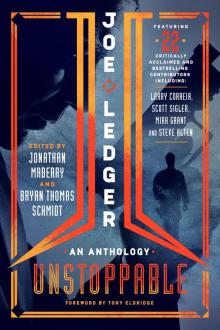 Patient Zero
Patient Zero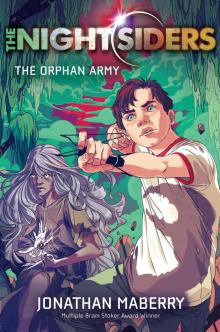 The Orphan Army
The Orphan Army Ghost Road Blues
Ghost Road Blues Vault of Shadows
Vault of Shadows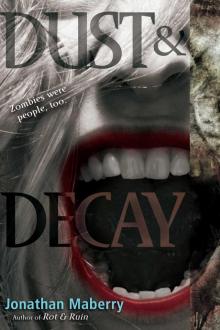 Dust and Decay
Dust and Decay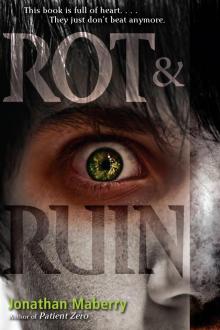 Rot and Ruin
Rot and Ruin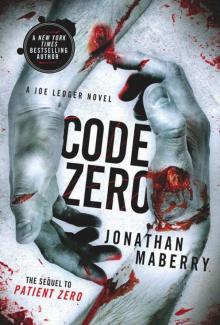 Code Zero
Code Zero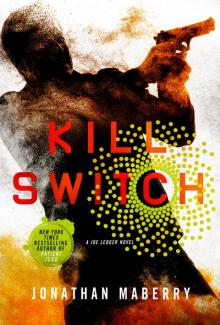 Kill Switch
Kill Switch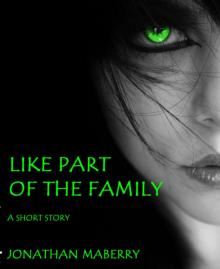 Like Part of the Family
Like Part of the Family Flesh and Bone
Flesh and Bone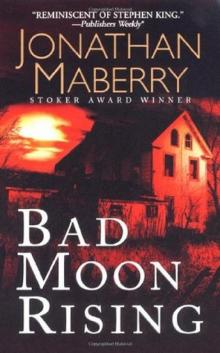 Bad Moon Rising
Bad Moon Rising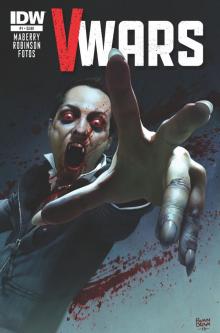 V-Wars
V-Wars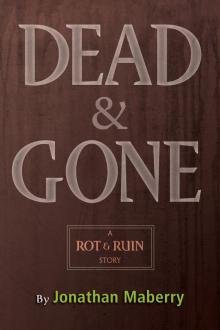 Dead & Gone
Dead & Gone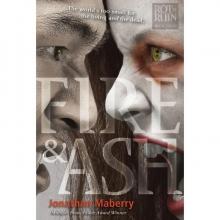 Fire and Ash
Fire and Ash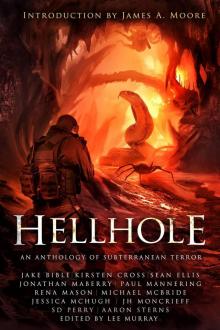 Hellhole
Hellhole Countdown
Countdown Dogs of War
Dogs of War Pegleg and Paddy Save the World
Pegleg and Paddy Save the World Dead Mans Song
Dead Mans Song Assassin's Code
Assassin's Code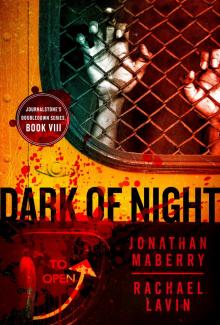 Dead of Night
Dead of Night Zombie CSU
Zombie CSU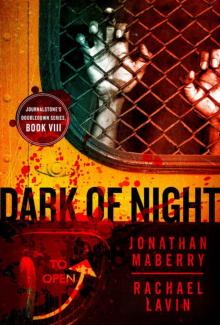 Dark of Night - Flesh and Fire
Dark of Night - Flesh and Fire Aliens: Bug Hunt
Aliens: Bug Hunt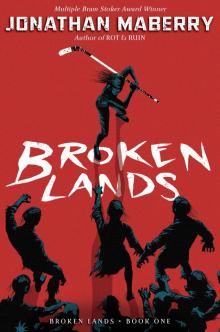 Broken Lands
Broken Lands Fall of Night
Fall of Night Ink
Ink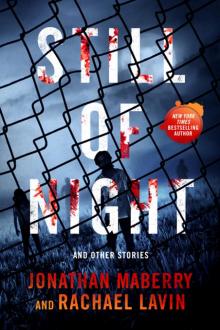 Still of Night
Still of Night Relentless
Relentless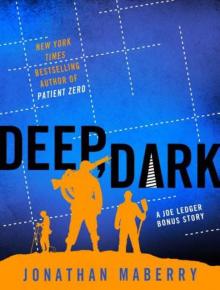 Joe Ledger 1.20 - Story to the Dragon Factory - Deep, Dark (a joe ledger novel)
Joe Ledger 1.20 - Story to the Dragon Factory - Deep, Dark (a joe ledger novel)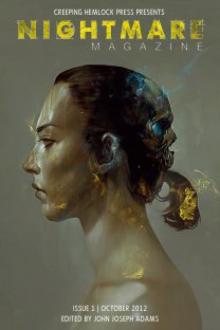 Property Condemned (pine deep)
Property Condemned (pine deep) The Dragon Factory jl-2
The Dragon Factory jl-2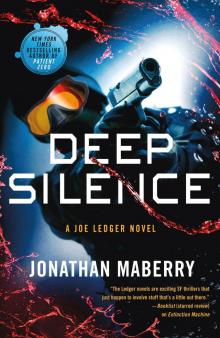 Deep Silence
Deep Silence Joe Ledger
Joe Ledger SNAFU: An Anthology of Military Horror
SNAFU: An Anthology of Military Horror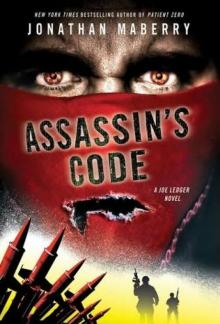 Assassin's code jl-4
Assassin's code jl-4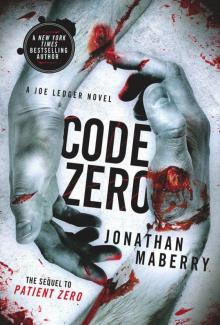 Code Zero: A Joe Ledger Novel
Code Zero: A Joe Ledger Novel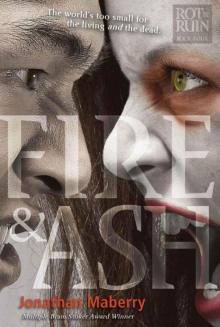 Fire & Ash bi-4
Fire & Ash bi-4 Tooth & Nail (benny imura)
Tooth & Nail (benny imura) Dead Man's Song pd-2
Dead Man's Song pd-2 Joe Ledger: Unstoppable
Joe Ledger: Unstoppable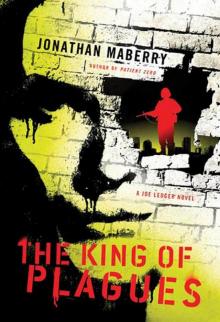 The King of Plagues jl-3
The King of Plagues jl-3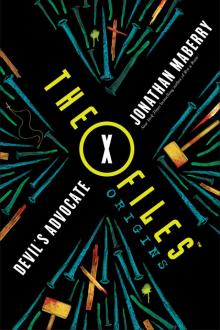 The X-Files Origins--Devil's Advocate
The X-Files Origins--Devil's Advocate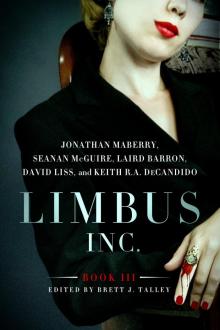 Limbus, Inc., Book III
Limbus, Inc., Book III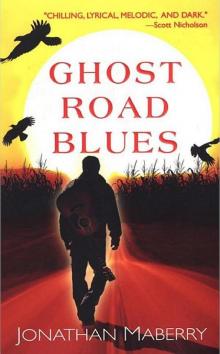 Ghost Road Blues pd-1
Ghost Road Blues pd-1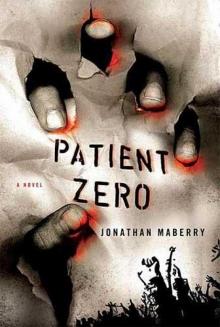 Patient Zero jl-1
Patient Zero jl-1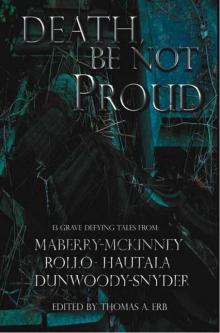 Death, Be Not Proud
Death, Be Not Proud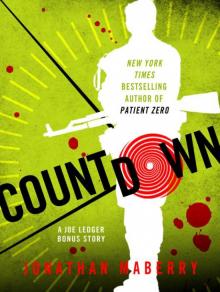 Countdown: A Joe Ledger Prequel Short Story to Patient Zero (joe ledger)
Countdown: A Joe Ledger Prequel Short Story to Patient Zero (joe ledger) Aliens
Aliens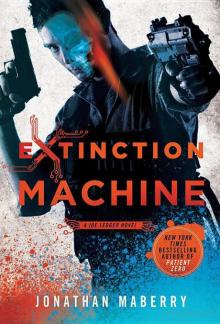 Extinction Machine jl-5
Extinction Machine jl-5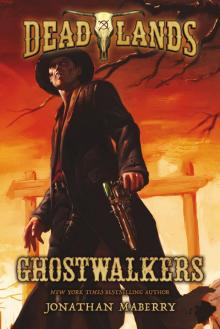 Ghostwalkers
Ghostwalkers Flesh & Bone bi-3
Flesh & Bone bi-3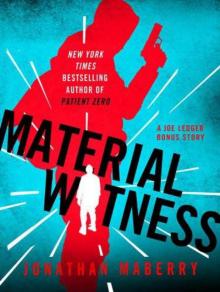 Joe Ledger 2.10 - Material Witness (a joe ledger novel)
Joe Ledger 2.10 - Material Witness (a joe ledger novel) Nights of the Living Dead
Nights of the Living Dead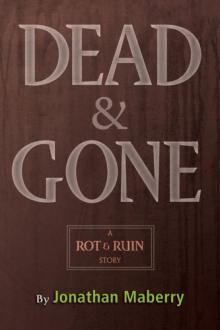 Dead & Gone (benny imura)
Dead & Gone (benny imura)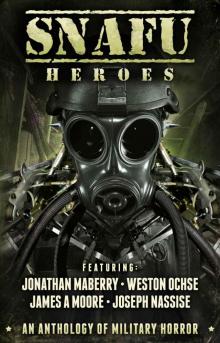 SNAFU: Heroes: An Anthology of Military Horror
SNAFU: Heroes: An Anthology of Military Horror Tooth & Nail: A Rot & Ruin Story
Tooth & Nail: A Rot & Ruin Story